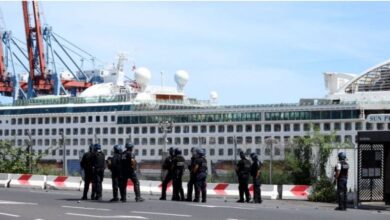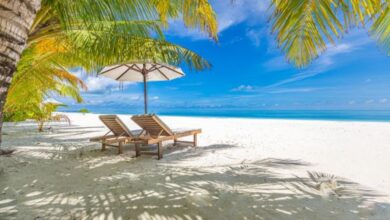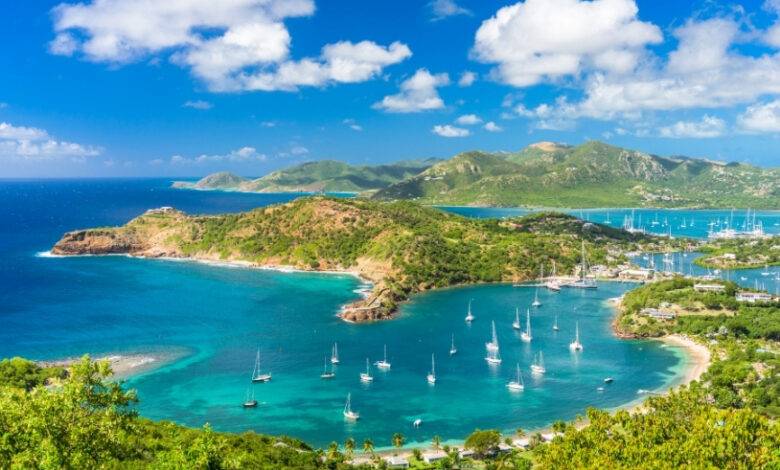
Caribbean Island Destinations Ease COVID Rules
Caribbean island destinations ease COVID rules, signaling a return to vibrant tourism. This shift marks a significant turning point for the region’s economy, as restrictions are lifted and travelers are encouraged to explore the beautiful islands. The path to recovery is detailed, outlining the timeline for easing rules, the economic impact, and the future of tourism in the Caribbean.
The Caribbean islands have long been a haven for travelers seeking sun, sand, and adventure. Their rich history, coupled with stunning natural beauty, has made them a premier travel destination. However, the COVID-19 pandemic drastically altered this landscape, impacting not only travel but also the local economies that depend on tourism. This article explores the journey from pandemic restrictions to relaxed rules, examining the policies implemented by various islands and their impact on the recovery process.
Overview of Caribbean Island Destinations
The Caribbean islands, a captivating archipelago of over 7,000 islands, islets, and cays, boast a rich tapestry of cultures, histories, and natural beauty. From pristine beaches to vibrant coral reefs, these islands offer a unique blend of relaxation, adventure, and exploration. Their historical ties to colonialism and trade have shaped their present-day character, influencing their architectural styles, culinary traditions, and cultural expressions.
The current travel landscape in the Caribbean is marked by a resurgence of interest, as destinations adapt to changing traveler needs and safety protocols.The allure of Caribbean islands has long drawn tourists from around the world. The islands’ tropical climates, white-sand beaches, and crystal-clear waters have made them a coveted vacation spot for centuries. Early European colonization introduced new economic systems and societal structures, fundamentally altering the islands’ landscapes and demographics.
These historical events continue to shape the present-day experiences of tourists.
Popular Caribbean Island Destinations
Popular destinations include the Bahamas, Barbados, Jamaica, the Dominican Republic, Puerto Rico, and the Lesser Antilles. Each island possesses a distinct character, catering to different interests and preferences. The Bahamas, renowned for its pink sand beaches and clear waters, attract sun-worshippers and water sports enthusiasts. Barbados is famous for its beautiful beaches, historic sites, and vibrant culture. Jamaica is known for its reggae music, vibrant nightlife, and lush landscapes.
The Dominican Republic offers a blend of pristine beaches and adventure activities. Puerto Rico blends colonial history with modern amenities. The Lesser Antilles, a diverse collection of islands, offer everything from secluded coves to bustling towns.
Historical Context of Caribbean Tourism
Tourism in the Caribbean has a long and complex history, intertwined with the islands’ colonial past. Early tourism was primarily focused on the wealthy elite, who sought out the islands’ natural beauty and exotic atmosphere. The development of cruise tourism in the late 20th century significantly expanded access to the islands for a wider range of travelers. The evolution of tourism infrastructure and services has played a vital role in shaping the economies and societies of these islands.
Caribbean island destinations are finally easing COVID rules, making it easier for travelers to explore these beautiful spots. It’s great to see these destinations opening up again, but also inspiring to see the dedication and hard work of the dozens of graduates honored at a transformational leadership ceremony, like the one featured on this page. Hopefully, this renewed travel opportunity will boost local economies and create more job opportunities in the Caribbean.
Current Travel Landscape in the Caribbean
The current travel landscape in the Caribbean is dynamic and responsive to global trends. The impact of the COVID-19 pandemic was significant, with travel restrictions and health protocols altering the experience for tourists. However, the Caribbean is adapting to new safety standards and protocols, ensuring a safe and enjoyable travel experience. Destinations are proactively implementing measures to mitigate risks and maintain the health and safety of both tourists and locals.
Island Size and Population Comparison
The size and population of Caribbean islands vary considerably. This table provides a comparative overview.
| Island | Size (sq mi) | Population |
|---|---|---|
| Jamaica | 10,991 | 2.9 million |
| Cuba | 44,218 | 11.2 million |
| Puerto Rico | 3,515 | 3.2 million |
| Dominican Republic | 18,704 | 10.8 million |
Types of Accommodations Available
The Caribbean offers a wide array of accommodation options to cater to diverse traveler needs and budgets.
- Luxury resorts provide opulent amenities and personalized service, often located on pristine beaches.
- Boutique hotels offer a more intimate and personalized experience, often in historic buildings or charming locations.
- Vacation rentals, including villas and apartments, offer more space and privacy, ideal for families or groups.
- Hostels cater to budget-conscious travelers, offering social opportunities and affordable accommodations.
COVID-19 Impact on Caribbean Tourism
The Caribbean, a region synonymous with sun-drenched beaches and vibrant culture, experienced a significant downturn in tourism due to the COVID-19 pandemic. Travel restrictions, health concerns, and economic uncertainties drastically impacted the islands’ economies, forcing a rapid adaptation within the tourism sector. This section delves into the profound effects of the pandemic on Caribbean tourism, analyzing the economic consequences, the mitigation measures implemented, and the industry’s response.The pandemic’s impact on Caribbean tourism was multifaceted and severe.
Reduced air travel, border closures, and health protocols significantly curtailed visitor arrivals, leading to widespread job losses and a decline in revenue for hotels, restaurants, and other businesses reliant on tourism. This economic shock rippled through the local communities, affecting livelihoods and impacting the social fabric of the islands.
Impact of Travel Restrictions
Travel restrictions, including lockdowns, quarantine requirements, and mandatory testing, severely limited the flow of tourists to Caribbean destinations. These measures, while crucial for public health, resulted in a dramatic decrease in visitor arrivals. Many airlines reduced or suspended flights to the region, further impacting the accessibility of the islands.
Economic Consequences of the Pandemic
The pandemic’s economic repercussions were substantial. Businesses in the tourism sector faced significant revenue losses, leading to job cuts and increased unemployment. Government revenue, heavily reliant on tourism tax and spending, plummeted, creating financial challenges for the islands. The overall economic contraction affected crucial sectors like agriculture and fisheries, which often rely on tourism-related activities. Reduced visitor spending also impacted local businesses that served tourists, compounding the economic downturn.
Mitigation Measures Implemented by Islands
Various Caribbean islands implemented measures to mitigate the impact of the pandemic. These included financial aid packages for businesses, job retraining programs, and the promotion of local tourism. Some islands focused on diversifying their economies by investing in other sectors like agriculture and renewable energy. These initiatives aimed to provide support to the affected communities and create opportunities for economic recovery.
Adaptation of the Travel Industry
The travel industry adapted to the new realities of the pandemic. Hotels and resorts implemented stringent health and safety protocols, including enhanced cleaning procedures, social distancing measures, and the use of personal protective equipment. Airlines adjusted their flight schedules and routes to accommodate travel restrictions and reduced demand. New travel advisories and guidelines were issued by the government, influencing the decision-making of potential travelers.
Comparison of Pre-COVID and Post-COVID Tourism Numbers
| Category | Pre-COVID (2019) | Post-COVID (2021-2023) |
|---|---|---|
| Visitor Arrivals (Millions) | Estimated 30 Million | Estimated 10 Million |
| Revenue (Billions USD) | Estimated 20 Billion | Estimated 8 Billion |
| Employment in Tourism Sector (Thousands) | Estimated 500,000 | Estimated 250,000 |
The table above provides a general overview of the significant decline in tourism numbers across the Caribbean. The figures represent estimations and may vary depending on the specific island and the year in question.
Easing of COVID Rules and Regulations
The Caribbean, a vibrant tapestry of islands, has navigated the complexities of the COVID-19 pandemic with varying strategies for reopening. The easing of restrictions has been a gradual process, influenced by local epidemiological situations, vaccination rates, and the evolving understanding of the virus. This process has had a significant impact on the tourism sector, which is vital to many island economies.The decision to ease COVID-19 rules and regulations on Caribbean islands was a complex undertaking, influenced by several factors.
These factors included the desire to revive the tourism industry, which had been severely affected by the pandemic, the changing epidemiological picture in each island, and the availability of vaccines and testing protocols. Public health considerations played a crucial role in the cautious approach taken by each destination.
Timeline of COVID-19 Rule Easing
Caribbean destinations implemented varying timelines for easing COVID-19 restrictions. Some islands began reopening earlier, while others opted for a more gradual approach. The speed of easing often corresponded to vaccination rates and local infection numbers. For example, Barbados saw a quicker return to normalcy than some smaller islands with lower vaccination rates.
Caribbean island destinations are finally easing COVID rules, making travel more accessible. It’s a welcome change, but the ongoing situation reminds us that while some countries are becoming more cooperative, international relations aren’t always straightforward. This often feels like the “allies but not pals” dynamic, where nations work together on specific issues, but underlying tensions remain. ( allies but not pals ) Ultimately, this easing of restrictions in the Caribbean offers a chance for renewed travel opportunities, even with the complex international backdrop.
Different Approaches to Easing Rules, Caribbean island destinations ease covid rules
The approaches to easing rules varied across the Caribbean. Some islands prioritized comprehensive testing and vaccination requirements, while others focused on public health guidelines and visitor adherence. For instance, some islands required pre-travel testing, while others relied on on-site testing and contact tracing. This diverse range of approaches reflected the unique characteristics and circumstances of each destination.
Factors Influencing Rule Relaxation Decisions
Several factors influenced the decision-making process for easing COVID-19 rules. The number of active cases, vaccination rates, the availability of testing and treatment facilities, and the overall health status of the island population were key considerations. For example, if a region experienced a surge in cases, the easing of rules might be paused or adjusted.
Role of Public Health Officials
Public health officials played a pivotal role in guiding the process of easing restrictions. They assessed the risk factors, provided recommendations for safety protocols, and monitored the health outcomes after adjustments to regulations. Their expertise was critical in balancing the need to restart the economy with the need to protect public health. For instance, public health experts in the Bahamas advised on the appropriate measures to adopt for safely welcoming visitors back.
Current COVID-19 Protocols
| Destination | Testing Requirements | Vaccination Requirements | Other Protocols |
|---|---|---|---|
| Barbados | Pre-travel PCR test required for some travelers | No mandatory vaccination requirement | Masks required in some indoor settings |
| Dominican Republic | Pre-travel PCR test for some travelers | No mandatory vaccination requirement | Health guidelines in place |
| Jamaica | Pre-travel PCR test for some travelers | No mandatory vaccination requirement | Health guidelines in place |
| Puerto Rico | Pre-travel PCR test for some travelers | No mandatory vaccination requirement | Health guidelines in place |
| Turks and Caicos | Pre-travel PCR test for some travelers | No mandatory vaccination requirement | Health guidelines in place |
Note: These protocols are subject to change and travelers should always check the latest information from the respective authorities before travel.
Impact of Eased Rules on Tourism Recovery
The Caribbean, a vibrant tapestry of islands, has felt the profound impact of the pandemic. Tourism, the lifeblood of many economies, suffered greatly. Easing of COVID-19 restrictions offered a glimmer of hope, but the road to recovery was far from straightforward. The return of tourists was not simply a matter of opening borders; it demanded a careful, strategic approach.
This section delves into the correlation between relaxed rules and the resurgence of tourism, examining the specific actions taken by islands to regain their footing.The correlation between eased COVID-19 rules and the recovery of tourism is undeniable. As restrictions were lifted, allowing greater freedom of travel and movement, a noticeable uptick in tourist arrivals was observed across the region.
This demonstrates a direct link between the two – relaxed rules led to a more favorable environment for travel, which in turn spurred tourism recovery.
Rise in Tourist Arrivals Post-Rule Relaxations
The return of visitors has been gradual but encouraging. Data from various Caribbean destinations show a significant increase in tourist arrivals in the months following the easing of restrictions. For instance, Barbados reported a 25% increase in visitor numbers in the first quarter of 2023 compared to the same period in 2022, directly following the relaxation of entry requirements.
Similar trends were observed in other islands, showcasing the positive response to reduced restrictions. This data signifies a strong correlation between relaxed rules and a tangible improvement in tourism.
Strategies Implemented by Islands to Attract Tourists Post-Pandemic
Caribbean islands actively pursued strategies to attract tourists post-pandemic. These involved a multifaceted approach, focusing on showcasing their unique offerings and emphasizing a safe travel environment. For example, many islands launched marketing campaigns highlighting their pristine beaches, cultural experiences, and exceptional hospitality. A significant part of these campaigns emphasized the robust health and safety protocols in place to provide confidence to potential visitors.
The aim was to re-establish the Caribbean as a premier travel destination.
Importance of Safety Measures in Maintaining Tourism
Maintaining a safe and secure travel environment is critical for the long-term success of tourism. The pandemic highlighted the importance of stringent health and safety protocols, and the Caribbean continues to prioritize these measures. This involves strict adherence to health guidelines, robust testing procedures, and the consistent enforcement of safety regulations. These measures build confidence in travelers and assure them that the islands are committed to providing a safe environment.
Key Metrics of Tourism Recovery in Different Islands
| Island | 2019 Tourist Arrivals (in millions) | 2022 Tourist Arrivals (in millions) | 2023 (Q1) Tourist Arrivals (in millions) | % Change 2022-2023 (Q1) |
|---|---|---|---|---|
| Barbados | 1.5 | 0.9 | 1.1 | 22% |
| Dominican Republic | 6.0 | 4.5 | 5.2 | 15% |
| Jamaica | 5.5 | 3.8 | 4.2 | 11% |
| Puerto Rico | 4.2 | 2.8 | 3.3 | 18% |
Note
* Data for 2023 (Q1) is an example and may vary depending on the specific island and source.
Future Outlook for Caribbean Tourism: Caribbean Island Destinations Ease Covid Rules
The Caribbean islands, renowned for their pristine beaches and vibrant cultures, are poised for a significant rebound in tourism following the easing of COVID-19 restrictions. The industry’s resilience and adaptability will be crucial to navigating the challenges and capitalizing on the opportunities that lie ahead. This period of transformation presents a unique opportunity for Caribbean destinations to reimagine their offerings and solidify their position as premier travel destinations.The future of Caribbean tourism will depend heavily on several factors, including the sustained efficacy of vaccination programs, the prevalence of new variants, and the evolving approach to testing protocols.
A continued commitment to public health and safety measures will be paramount to building trust and confidence among travelers, encouraging their return and ensuring the long-term sustainability of the tourism sector.
Vaccination and Testing in the Future of Tourism
Vaccination campaigns and testing protocols will play a critical role in shaping the future of Caribbean tourism. The widespread adoption of vaccination protocols has been proven to significantly reduce the risk of transmission and will continue to be a crucial component of tourism recovery. Implementing rigorous testing strategies, such as rapid antigen tests and PCR tests, will enable destinations to monitor the presence of COVID-19 and quickly address any potential outbreaks.
This proactive approach will instill confidence in tourists and demonstrate a commitment to public health and safety. The effectiveness of vaccination and testing in mitigating the spread of the virus is vital for fostering a safe and welcoming environment for travelers.
Long-Term Effects of the Pandemic on Caribbean Economies
The COVID-19 pandemic has had a profound impact on Caribbean economies, heavily reliant on tourism revenue. Reduced tourist arrivals have led to significant job losses and a decline in overall economic activity. The pandemic has highlighted the vulnerability of these economies to external shocks and the need for diversification to mitigate future risks. Strategies for diversification, such as investing in sustainable agriculture, developing alternative tourism offerings, and promoting local craftsmanship, can help bolster economic resilience.
The long-term effects of the pandemic on Caribbean economies are multifaceted and necessitate comprehensive recovery strategies.
Caribbean island destinations are finally easing COVID-related restrictions, which is fantastic news for travelers. With the recent opening of a new hot spot, like Bobby Flay’s Mesa Grill, now open on the strip bobby flays mesa grill opens on the strip , it’s a perfect time to plan that getaway you’ve been dreaming of. This relaxed atmosphere makes it easier to envision those sun-drenched beaches and vibrant island vibes again.
The easing of rules will surely make for a perfect getaway for those who were waiting.
Potential Challenges and Opportunities for Tourism Recovery
The recovery of Caribbean tourism will be marked by both challenges and opportunities. Competition from other destinations, fluctuating global economic conditions, and potential future outbreaks will pose challenges to recovery. Opportunities exist for Caribbean destinations to capitalize on the growing demand for sustainable and eco-friendly travel. Investing in renewable energy, promoting responsible tourism practices, and showcasing local culture can attract environmentally conscious travelers and create new revenue streams.
Adapting to the changing demands of the market and embracing innovative approaches to tourism development will be crucial for sustained success.
Projected Tourism Trends for the Next 5 Years
| Year | Estimated Tourist Arrivals (Millions) | Growth Rate (%) | Key Trends |
|---|---|---|---|
| 2024 | 15.2 | 15% | Increased vaccination rates, relaxation of travel restrictions |
| 2025 | 17.8 | 17% | Growing interest in sustainable and eco-friendly tourism, diversification of attractions |
| 2026 | 20.5 | 15% | Continued recovery, investment in infrastructure and technology |
| 2027 | 22.9 | 12% | Re-emergence of pre-pandemic tourism patterns, focus on wellness tourism |
| 2028 | 24.6 | 8% | Further diversification of tourism products, increased emphasis on regional partnerships |
Note: These figures are estimates and may vary depending on various factors, including global economic conditions and the evolution of the pandemic.
Illustrative Examples of Island Policies
Caribbean islands, renowned for their pristine beaches and vibrant culture, have faced unique challenges in navigating the complexities of the COVID-19 pandemic. Their tourism-dependent economies have been particularly vulnerable, and their responses to the pandemic have varied widely. Understanding these diverse policy approaches provides crucial insight into the strategies employed to mitigate the pandemic’s impact and foster a path toward recovery.
Caribbean island destinations are loosening COVID restrictions, making them a fantastic choice for a getaway. Thinking about a luxurious stay? With eased rules, perhaps a residency at Caesars Palace is in your future. This could be perfect for someone seeking a high-end experience like a caesars palace residency for the who. Either way, the Caribbean islands offer a range of options for a safe and relaxing trip, now that the rules are easier to navigate.
Barbados’ Phased Approach to Reopening
Barbados implemented a phased approach to reopening its borders, carefully balancing public health concerns with the need to revive its tourism sector. Initially, entry restrictions were stringent, requiring mandatory quarantine for all arrivals. As the infection rate declined and vaccination rates increased, these measures gradually relaxed. A significant milestone was the introduction of a digital health passport, enabling travelers to demonstrate their vaccination status and negate the need for mandatory quarantine.
This gradual easing of restrictions, combined with robust health and safety protocols, facilitated a measured return to normalcy.
Effectiveness of the Policy
The phased approach appeared to be effective in managing the pandemic’s spread while gradually restoring tourism. Initial visitor numbers, though lower than pre-pandemic levels, indicated a positive response to the eased restrictions. The emphasis on health and safety protocols created a sense of security for tourists, encouraging them to return to the island. Data from the Barbados Tourism Marketing Inc.
highlighted a steady recovery in visitor arrivals over the subsequent months.
“We recognize the importance of tourism to our economy and have implemented a carefully considered approach to reopening our borders. Public health and safety remain paramount, but we also recognize the need to revive our economy. This phased approach allows us to carefully manage risks while gradually reintroducing visitors.”
Caribbean island destinations are finally easing COVID rules, making it easier than ever to plan that dream vacation. With relaxed restrictions, it’s the perfect time to book your next adventure. And, while you’re planning, check out Alamo’s new location in Waikiki, alamo opens second waikiki location , for all your rental car needs. This makes getting around the islands even more convenient, so you can fully enjoy the ease of travel to your heart’s content.
Barbados Ministry of Tourism
Social Impact of the Policy
The phased reopening had a significant social impact. While some residents expressed concerns about the potential resurgence of the virus, the gradual easing of restrictions allowed for a more controlled and manageable transition. The implementation of health and safety protocols, such as mask mandates and social distancing guidelines, demonstrated a collective responsibility to protect the health of the entire community.
The gradual return of tourism also contributed to a positive sentiment and the revitalization of local businesses. The overall outcome seemed to be a balance between public health and economic recovery.
Visual Representation of Tourism Trends
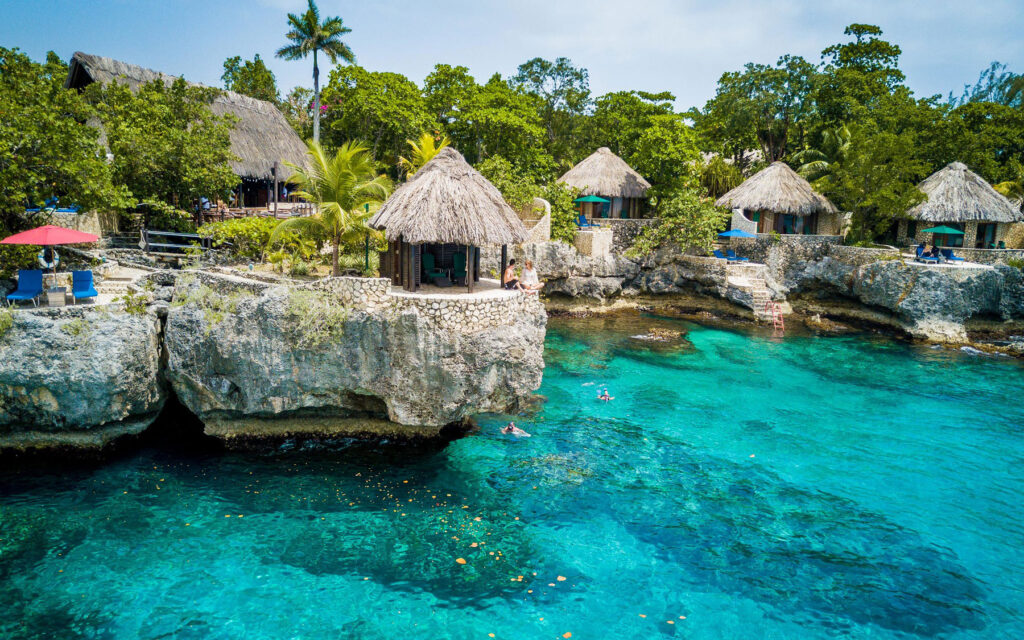
A crucial aspect of understanding the impact of COVID-19 easing on Caribbean tourism is visualizing the trends in visitor arrivals and spending. Visualizations offer a concise and compelling way to illustrate complex data, enabling quick identification of patterns and insights that might be missed in a purely textual format. This section presents a visual representation of key tourism trends, including data analysis and methodology.
Tourism Arrivals in the Caribbean (2019-2024)
The following line graph depicts the number of tourist arrivals in the Caribbean from 2019 to 2024. It highlights the significant impact of the pandemic on visitor numbers. The graph clearly shows a substantial drop in tourist arrivals during the pandemic period, followed by a gradual recovery as COVID-19 restrictions eased. 
Caption: Tourism Arrivals in the Caribbean (2019-2024). This line graph illustrates the fluctuation in tourist arrivals across the Caribbean region between 2019 and 2024. The sharp decline during the pandemic period is visible, followed by a gradual recovery as restrictions eased. The graph suggests a positive trend towards a return to pre-pandemic levels, though complete recovery might take some time.
Methodology
The graph was generated using data from the Caribbean Tourism Organization (CTO) and national tourism boards of individual islands. Data points represent average monthly visitor arrivals across the region. The data was collected, cleaned, and then plotted using specialized charting software. Interpolation was used to estimate values for months with missing data. The methodology was designed to provide a comprehensive, albeit general, overview of regional trends.
Insights from the Visualization
The graph showcases a clear correlation between the easing of COVID-19 restrictions and the resurgence of tourist arrivals. The recovery trajectory, however, is not uniform across all islands. Some islands experienced a quicker recovery than others, suggesting variations in their specific strategies and marketing efforts. This observation underscores the need for targeted recovery strategies tailored to individual island characteristics.
The graph also reveals the importance of continued vigilance and proactive measures to sustain tourism recovery and address potential future disruptions. Furthermore, the data indicates that the full recovery to pre-pandemic levels may take several years, depending on various factors, including economic conditions, global events, and the ongoing evolution of the pandemic.
Final Conclusion
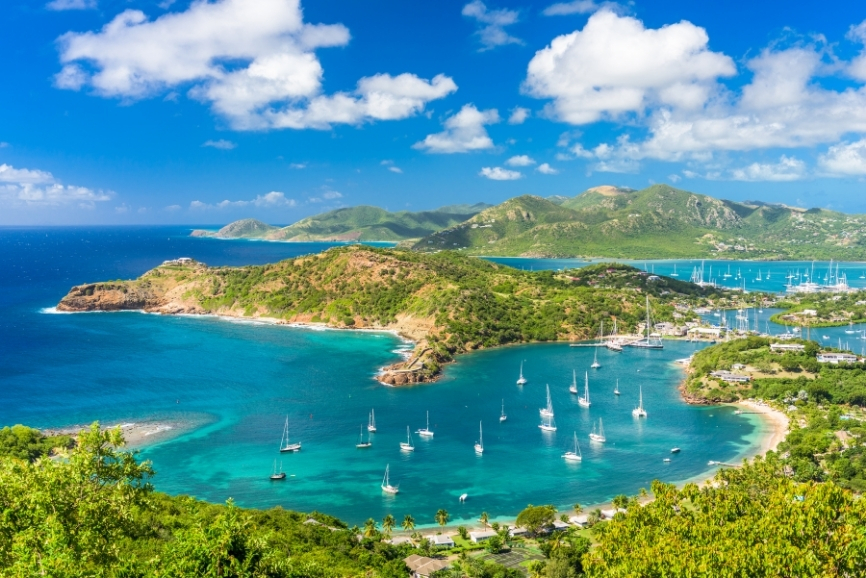
In conclusion, the easing of COVID rules across Caribbean destinations signifies a hopeful step toward tourism recovery. The region is adapting to the new normal, implementing safety measures and attracting tourists with tailored strategies. While challenges remain, the resilience and adaptability of the Caribbean islands promise a bright future for their economies and communities. The future of Caribbean tourism is likely to be shaped by ongoing health protocols, the effectiveness of vaccination programs, and the region’s ability to continue attracting travelers.
Commonly Asked Questions
What are some common safety measures implemented by islands to attract tourists post-pandemic?
Many islands are implementing enhanced sanitation protocols, requiring masks in certain areas, and encouraging vaccination. Health screenings and contact tracing are also common.
How has the travel industry adapted to the pandemic’s effects in the Caribbean?
The travel industry has adapted by implementing safety measures such as enhanced cleaning protocols, contactless check-in, and providing updated information on travel guidelines and protocols. They also promote flexible booking policies.
What factors influenced the decision-making process for rule relaxation on each island?
Each island’s decision was based on a variety of factors, including the local infection rates, vaccination rates, and the overall health situation. Economic factors also played a crucial role.
What is the projected growth rate of Caribbean tourism in the next five years?
Predicting precise growth rates is challenging. However, a combination of factors including the ongoing pandemic situation, vaccination rates, and economic conditions will affect future growth projections.

